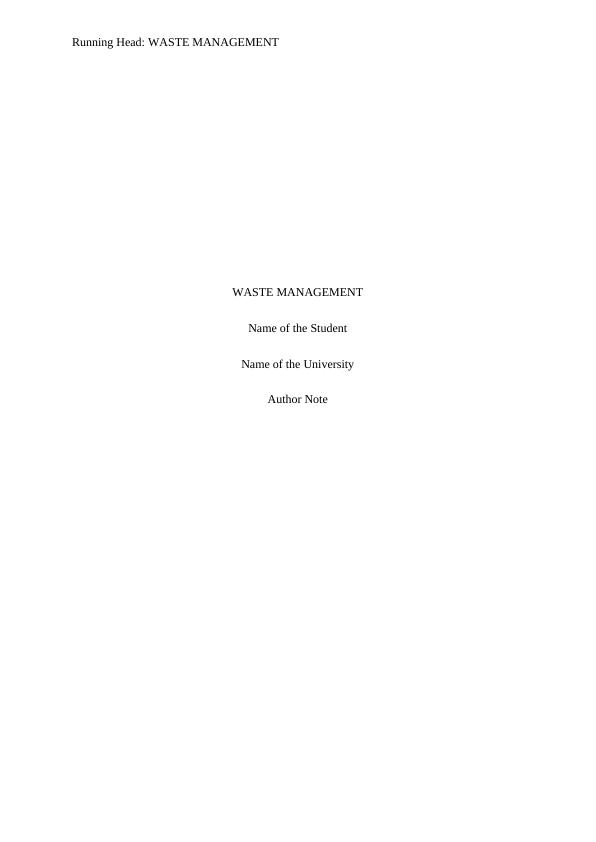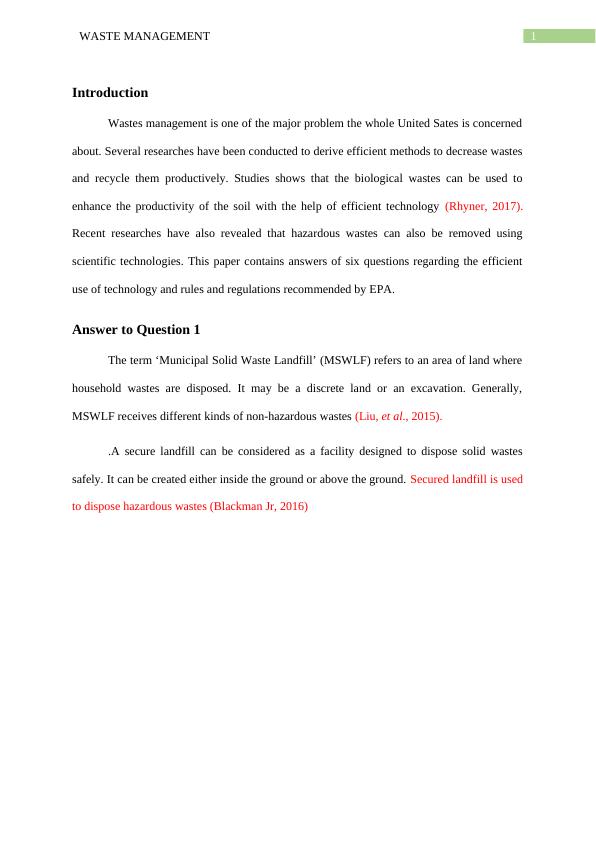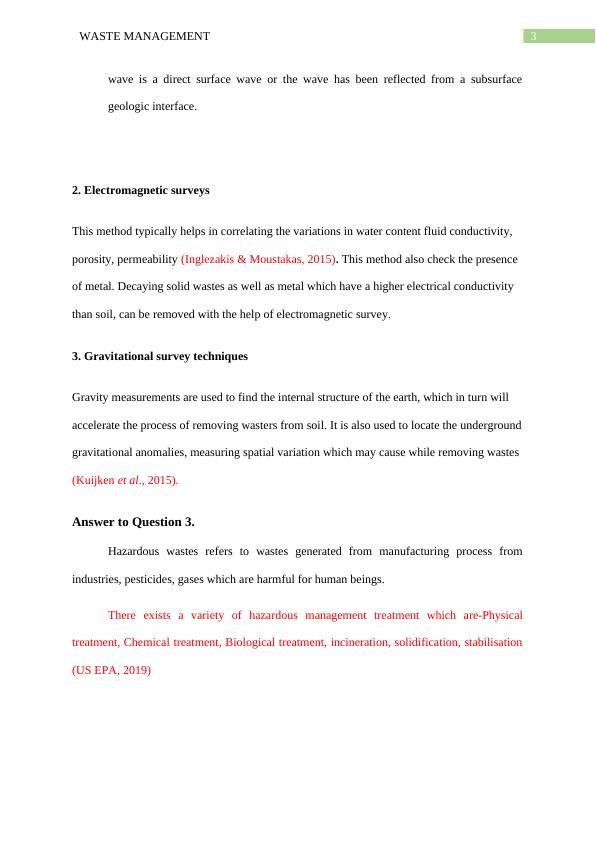Waste Management: Efficient Technologies and EPA Regulations
Compare the technical and technology requirements of municipal solid waste landfill and secure landfill.
14 Pages2426 Words140 Views
Added on 2023-04-23
About This Document
This article discusses efficient technologies and EPA regulations for waste management. It answers questions about municipal solid waste landfill, hazardous waste disposal, and provides tips for handling household hazardous wastes. The article also highlights the importance of proper waste management and its impact on the environment.
Waste Management: Efficient Technologies and EPA Regulations
Compare the technical and technology requirements of municipal solid waste landfill and secure landfill.
Added on 2023-04-23
ShareRelated Documents
End of preview
Want to access all the pages? Upload your documents or become a member.




